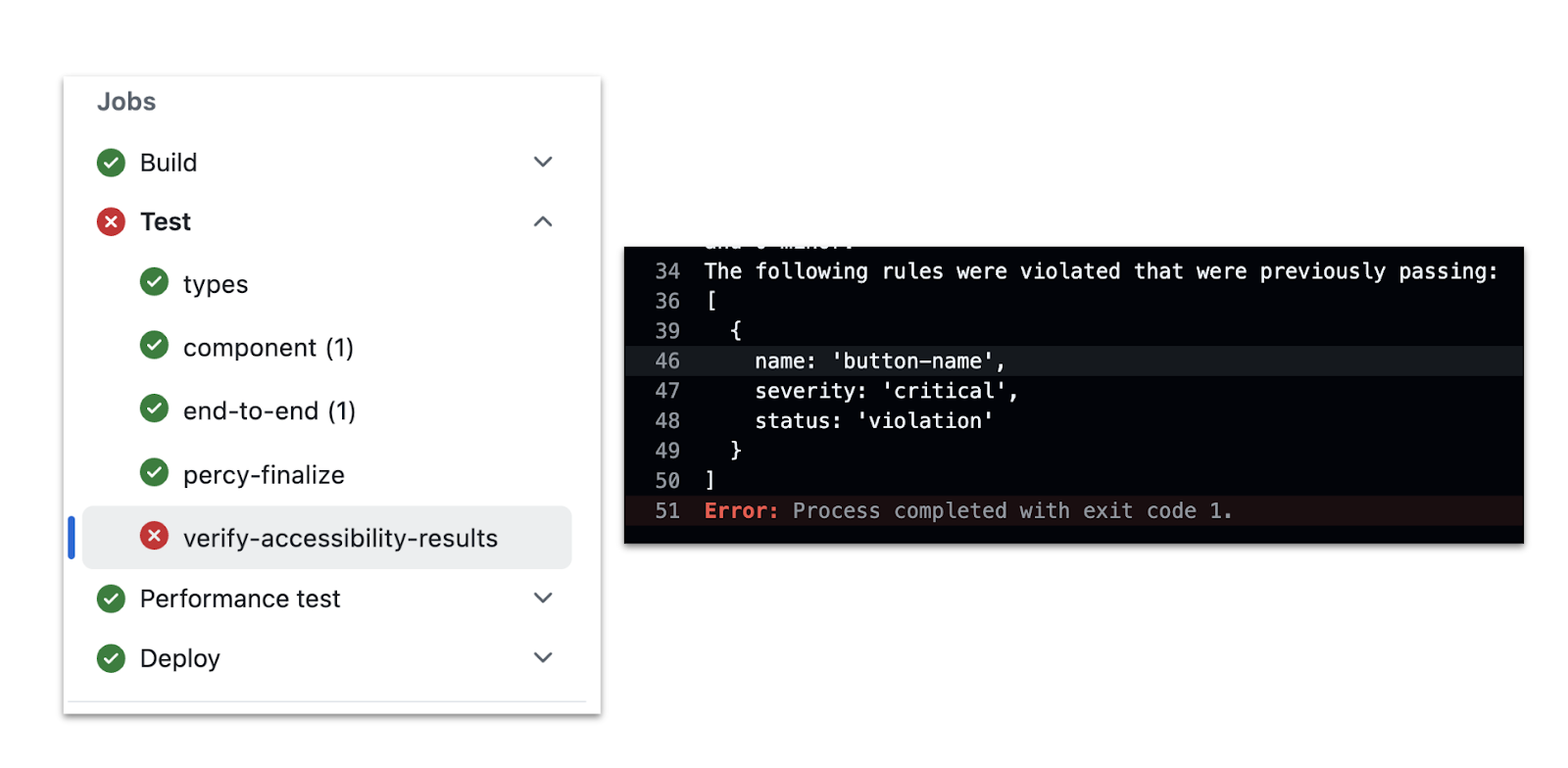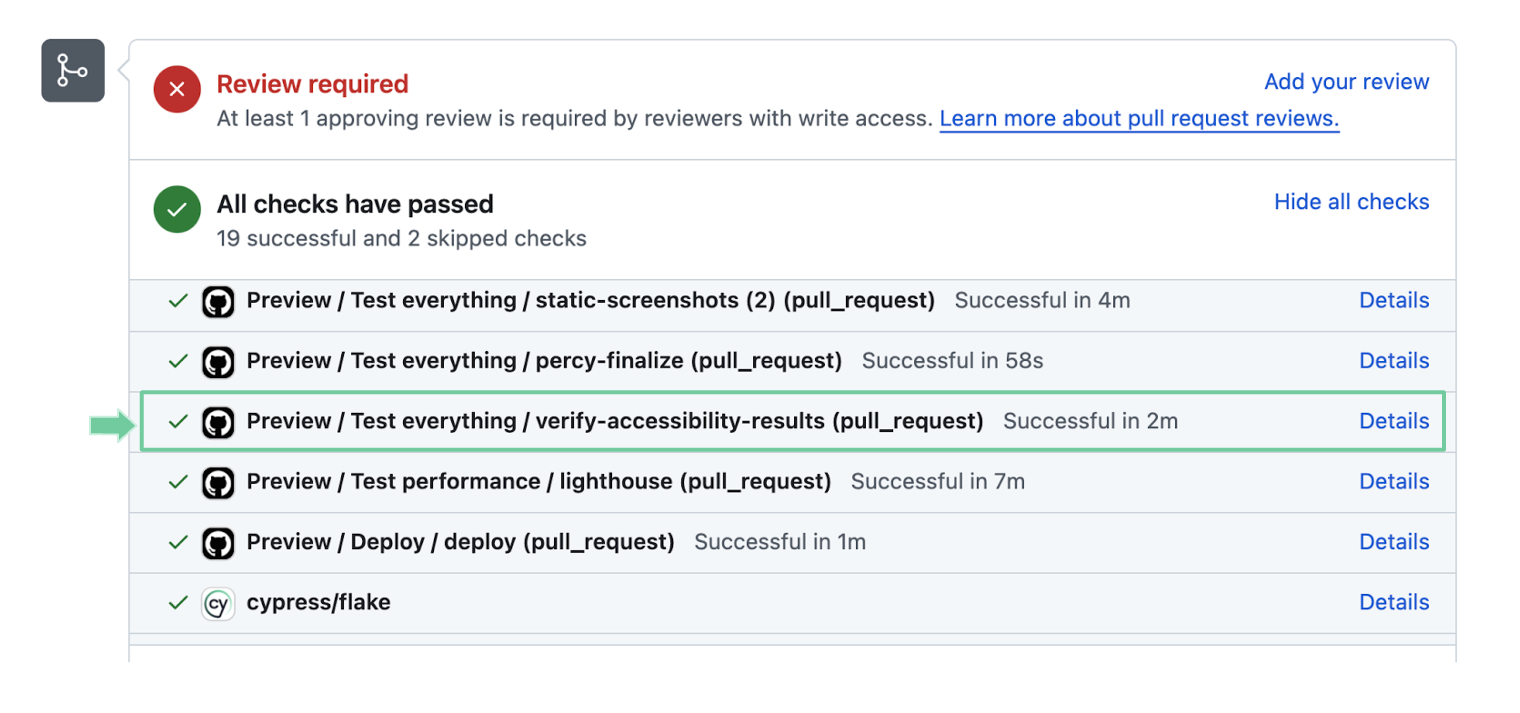Block pull requests and set policies
Cypress Accessibility reports are generated server-side in Cypress Cloud, based on test artifacts uploaded during execution. This ensures there is no performance impact on your Cypress test runs.
Using the Results API
The Cypress Accessibility Results API allows you to access accessibility results post-test run, enabling workflows like blocking pull requests or triggering alerts based on specific accessibility criteria. This involves adding a dedicated accessibility verification step to your CI pipeline. With a Cypress helper function, you can automatically fetch the report for the relevant test run within the CI build context. Below is an example of how to block a pull request in GitHub Actions if accessibility violations occur:

Implementing a status check
The Results API offers full flexibility to analyze results and take tailored actions. It can also integrate with status checks on pull requests. Below is an example of a passing accessibility verification step:

Defining policies in the verification step
The Results API Documentation provides detailed guidance on the API's capabilities. Here's a simplified example demonstrating how to enforce a "no new failing accessibility rules" policy:
const { getAccessibilityResults } = require('@cypress/extract-cloud-results')
// List of known failing rules
const rulesWithExistingViolations = [
'button-name',
// Add more rules as needed
]
// Fetch accessibility results
getAccessibilityResults().then((results) => {
// Identify new rule violations
const newRuleViolations = results.rules.filter((rule) => {
return !rulesWithExistingViolations.includes(rule.name)
})
if (newRuleViolations.length > 0) {
// Trigger appropriate action if new violations are detected
throw new Error(
`${newRuleViolations.length} new rule violations detected. These must be resolved.`
)
}
})
By examining the results and customizing your response, you gain maximum control over how to handle accessibility violations. Leverage CI environment context, such as tags, to fine-tune responses to specific accessibility outcomes.